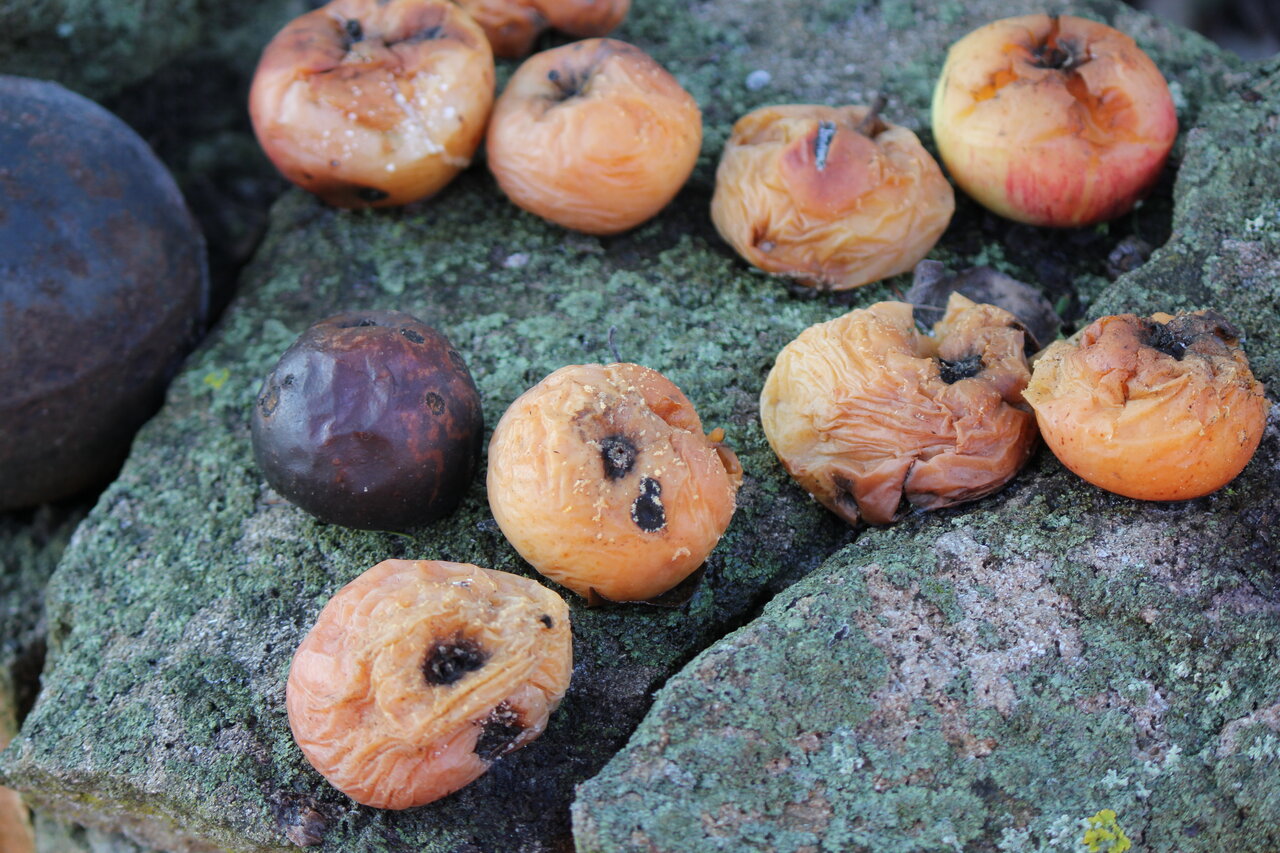Apple cores and apples are certainly one of the items of fruit waste that are best suited for compost heaps, piles, or bins. As soon as you have finished eating the apple, the core will begin to turn brown. It is nature's way of asking for the compost bin.
Table of Contents
Can you compost apples?
Under normal circumstances, apples can be composted when they are no longer edible, including the occasional windfall during the summer.
The composting process will be accelerated by cutting the apples into smaller pieces.
Can you compost apple cores?
Anyone with a composting bin or compost pile at home knows that fresh apple cores and old apple cores can be composted.
How long does it take for apples to decompose?
It takes about 2 months for apple cores to decompose. The decomposition of apple cores does not take as long as that of banana peels and oranges.
Despite this, they remain intact longer than fruits and vegetables, with higher water content and denser.
Why compost apples?
Apples are excellent for composting as they are relatively easy to break down and provide nutrients, such as nitrogen, to the compost pile.
You need to ensure that you add a sufficient amount of brown material. The nitrogen level will be prevented from becoming too high as a result, and pests such as fruit flies will not be attracted to the plants.
Fruit pulp contains no nutrients by itself, but its seeds contain nitrogen, phosphorus, and other plant nutrients. The compost heap will benefit from the addition of this item.
Any cons to composting apples?
Fruit flies are attracted to rotting apples during hot weather, which can be a nuisance to your compost.
As with other organic components, apples will be referred to as “green” components. These are responsible for determining how much nitrogen will be present in the soil.
Plants need nitrogen to survive. However, you don’t want the nitrogen levels to get too high.
Think about these risks when adding apples. Try to get a 50:50 nitrogen:carbon ratio.
Apples from a backyard apple tree, not commercial fruit trees, may be harmful to compost. There are already restrictions on commercial fruit production and movement to keep them pest-free, but homegrown apples might have maggots.
Infected fruit shouldn’t be composted. By doing this, you can make sure the bugs don’t live.
How to compost apples?
1. Cold Composting Apples
Adding apples to an existing bin can be simplified with fewer apples.
- If the apples are whole, chop them up and put them in the bin.
- Cover it with wet leaves, bedding from vegetarian pets, rough compost, or old straw.
- Continue adding apple and brown layers until all the apples are gone.
- Add a layer of browns to reduce odors and insects.
It can take up to two years to make good compost using this cold composting process.
Bear in mind that when using cold composting techniques, the pile won’t get hot enough to sterilize the apple seeds, so the finished compost might be spread like an orchard.
2. Trench Composting apples
Apples can also be trench composted if you have space in your garden to dig and let them decompose for two years.
- A trench should be at least 12 inches deep; two spits are usually enough.
- Soil removed from the trench is placed on the side.
- Place 4 to 6 inches of apples in the trench and cover them with the soil you removed.
- As the apples decompose, a small mound will form.
Traditionally, runner beans or marrows are planted in trenches. Rather than digging a trench across the plot, a circular “trench” can be dug if the trench will be used for marrows, squashes, or beans planted in wigwams.
3. Hot Composting Apples
Apples can be hot composted. Hot composting is when microbial activity inside the compost pile is maximized, resulting in finished compost in a shorter timeframe.
Time, patience, and some special equipment are needed. Normally, organic matter is added as it accumulates, but with hot composting, the whole point is to get the pile hot.
You need a lot of organic matter with the right carbon-to-nitrogen ratio to do this.
- Getting the carbon to nitrogen ratio right is important to get the microbial activity going. You should have 2 parts carbon to one part nitrogen in your pile.
- You can use fallen apples or apple scraps or pieces as the organic material for the green nitrogen part of the mix.
- With the carbon to nitrogen ratio in mind, you can use a lot of apples as long as you chop them up before adding them to the compost bin.
- The apples are considered green material (so is food waste and kitchen scraps or food scraps).
- For the brown carbon material, you can use the dried leaves of the apple tree if you have access to them or use sawdust, wood chips, coffee grounds, yard waste, grass clippings, or pine needles.
Can you add apple peels to vermicompost?
Yes, you can.
If you have a lot of apple cores, spoiled apples, or fruit trimmings, you can feed them to your worms by slicing them up into manageable portions.

